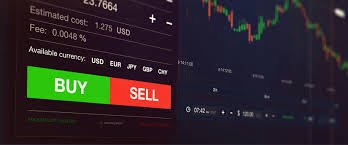Understanding Forex Trading Charts: A Comprehensive Guide
In the world of forex trading, charts serve as a vital tool for traders to analyze market trends and make informed decisions. Understanding the various types of forex trading charts and how to interpret them can greatly enhance a trader’s ability to navigate the complexities of the foreign exchange market. This article explores the intricacies of forex trading charts, including their types, how to read them, and strategies for successful trading. To begin your journey in forex trading, consider checking out forex trading charts https://forex-exregister.com/, a helpful resource for traders.
Types of Forex Trading Charts
Forex trading charts come in various formats, each providing unique insights into price movements over specific periods. The primary types of charts used in forex trading include:
1. Line Charts
Line charts are the simplest form of forex charts. They display the closing prices of a currency pair over a particular time frame, connected by a continuous line. This type of chart is beneficial for identifying the general direction of the market over time but provides little information about the volatility or price movement within those periods.
2. Bar Charts
Bar charts offer more detail compared to line charts. Each bar represents a specific timeframe (e.g., one hour, one day) and displays the open, high, low, and close prices (OHLC) within that period. The left side of the bar shows the opening price, while the right side shows the closing price. The vertical line indicates the high and low prices during that period, making it easier for traders to visualize price fluctuations.

3. Candlestick Charts
Candlestick charts are widely popular among forex traders due to their visual appeal and rich information content. Each candlestick represents the price action over a specific timeframe, similar to bar charts, but delivers information in a more digestible format. Candlesticks are characterized by their bodies, which show the opening and closing prices, and wicks (or shadows), which indicate the highest and lowest prices during that time frame. Traders often analyze patterns in candlestick formations to make predictions about future price movements.
Understanding Chart Timeframes
The timeframe of a chart is crucial in forex trading as it influences the type of analysis a trader can perform. Forex charts can be categorized by various timeframes, including:
- Tick Charts: Prices change with every trade, allowing for highly detailed analysis.
- Minute Charts: Typically display price movements for 1, 5, 15, 30, and 60 minutes.
- Hourly Charts: Prices are displayed on an hourly basis, useful for short-term trading.
- Daily and Weekly Charts: These charts are often used by swing traders and position traders to identify longer-term trends.
Choosing the right timeframe is essential as it can significantly affect trading decisions. Shorter timeframes lead to more trades and can produce more noise, while longer timeframes emphasize the overall trend.
Reading Forex Trading Charts
To effectively trade using forex charts, traders must develop the ability to read and interpret chart patterns and trends. Here are some key aspects to consider:
1. Trends
Identifying trends—whether upward (bullish), downward (bearish), or sideways (range-bound)—is a fundamental aspect of chart analysis. Traders often look for higher highs and higher lows in an uptrend, lower highs and lower lows in a downtrend, and consistent highs and lows in a sideways trend.
2. Support and Resistance Levels
Support and resistance levels are critical indicators on forex charts. Support is a price level where buying interest is strong enough to prevent the price from falling further, while resistance is where selling interest is strong enough to keep the price from rising. Identifying these levels allows traders to plan entry and exit points strategically.
3. Patterns
Chart patterns such as triangles, flags, head and shoulders, and double tops/bottoms provide visual cues of potential future price movements. Recognizing these patterns can offer significant predictive power regarding market behavior.
Utilizing Technical Indicators
Many traders enhance their chart analysis with technical indicators—mathematical calculations based on the price, volume, or open interest of a security. Understanding how to integrate indicators into forex charts can provide additional layers of analysis. Common technical indicators include:
- Moving Averages: Used to smooth out price data and identify trends.
- Relative Strength Index (RSI): Measures the speed and change of price movements to identify overbought or oversold conditions.
- Bollinger Bands: Show volatility and potential price reversals.
Developing a Trading Strategy
Once traders are comfortable reading forex trading charts, they can develop trading strategies based on their analysis. A solid trading strategy should incorporate risk management techniques, entry and exit points, and an understanding of market conditions. Traders often use a combination of chart analysis and economic indicators to position themselves advantageously in the market.
Final Thoughts
Mastering forex trading charts is an essential skill for any trader looking to succeed in the dynamic forex market. By understanding the various types of charts, how to read them, and applying technical analysis, traders can significantly improve their decision-making processes. Continuous practice and learning about chart patterns, technical indicators, and developing personalized trading strategies will enhance a trader’s ability to navigate the complexities of forex trading. Remember, patience and discipline are key in this ever-evolving market.
